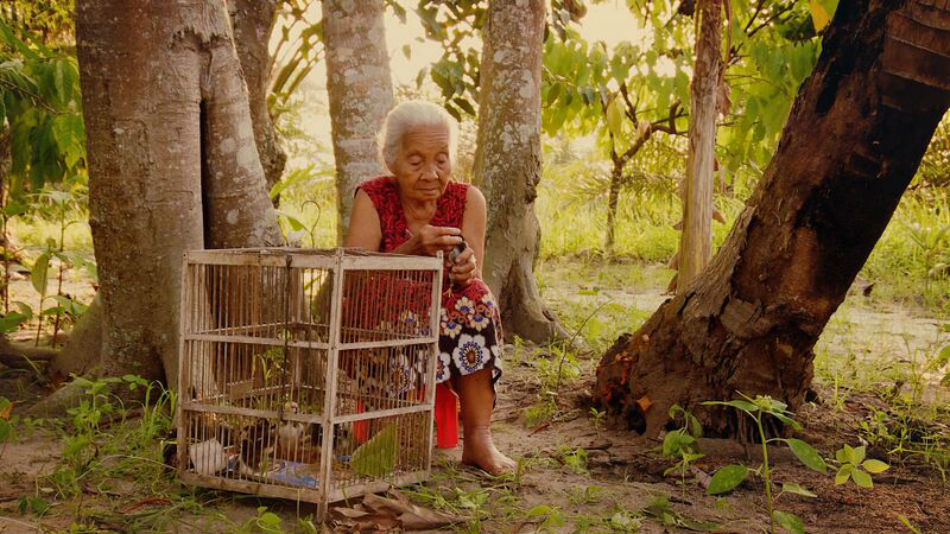[INDONESIA]
Mercury Cinema, Wed 30 Sep
It is chilling testimony to the authenticity of this profound documentary that many of those credited on the film, from co-producers, co-director, some cameramen, line producers and researchers, right down to gaffers and drivers, and many in the list of acknowledgements, are named as ‘Anonymous’.
Joseph Oppenheimer’s sobering and unbelievably honest documentary, The Look Of Silence, revolves around a family of survivors of the 1965 Indonesian genocide, when an estimated one million people were murdered as part of the military takeover. The perpetrators still hold power in Indonesia and silence has been the most effective survival mechanism for those remaining.
44-year-old Adi is an optometrist whose older brother, Ramli was one of the murdered. Their mother has never recovered from losing her son so brutally and now talks with her younger son about what happened, how it’s impacted her and her husband, and how she has managed to live, surrounded by her son’s killers. The care, quiet dignity and humour we see in these scenes with Adi’s aged parents, is humbling and beautiful.
In stark and shocking contrast, we see the leaders of the village Death Squads, now old men, talking openly about how they routinely murdered people at the infamous Snake River on a daily basis, during the massacres. Smiling and laughing while describing in sickening detail the different ways they would kill people, these men were proud of their jobs and the excellent work they did. Sometimes, their wives, children or grandchildren were also on camera and would act as a ‘victim’ model for a more detailed demonstration of a favoured slaughter technique.
Adi, on a quest to break the silence surrounding the events and to discover the truth about his brother’s death, arranges to meet the perpetrators and ask them about their actions. Sometimes he would fit them for glasses but there was no trickery in this as they had agreed to be interviewed on camera. The conversations are unimaginable as each man talks openly and enthusiastically about murdering countless people and his role in the community.
Three of the men said they regularly drank the blood of their victims to prevent madness; that “many went crazy from killing too many people” and the only way to avoid that was to drink victim’s blood, so you could go on killing without going mad. The rationale and ordinariness of each narrative was the most alarming thing, as if this was part of a Mass Murder Manual. Indeed, one of the men had written and illustrated a book about the killings and techniques used, including details of Ramli’s particularly brutal murder.
The courage involved in addressing this subject matter, with these people, is mind-boggling. By interviewing men who had been the Commanders of the Death Squads at Snake River and had become powerful in their positions, and one long-serving member of the governing legislature, the film-makers were putting themselves, and their families, at risk to make this documentary available to the world and insidious threats were made to them on more than one occasion.
This film lets the material speak for itself. There is a dignity and grace about it that defies the disturbing nature of the content and no wonder it swept awards at major film festivals all around the world.
An unforgettable piece of work, courageous, inspired, haunting and unprecedented, The Look Of Silence is, more than anything, proof of the unimaginable ability of the human psyche to adapt to anything in order to survive.
Remarkable!
Nikki Fort
The Clothesline Rating...
Nikki Fort
An unforgettable piece of work, courageous, inspired, haunting and unprecedented...




